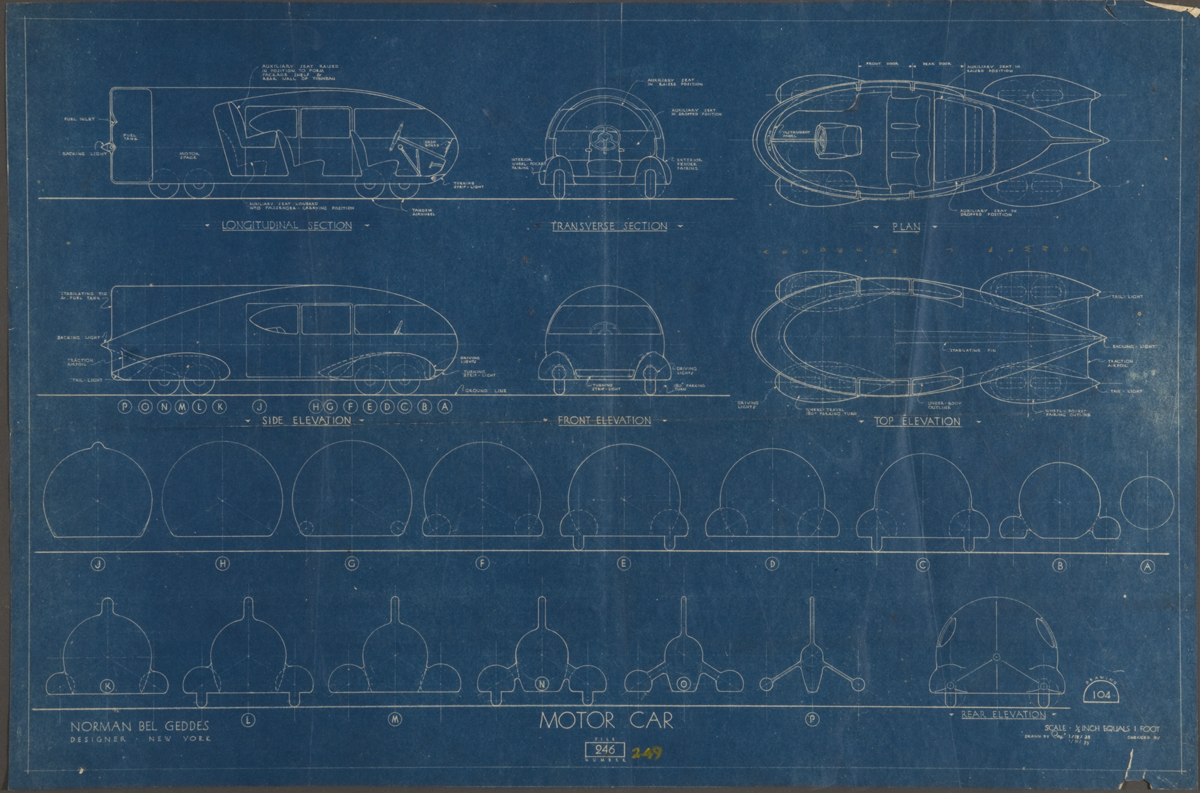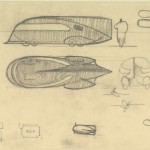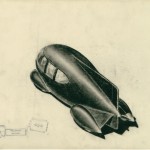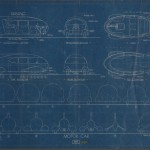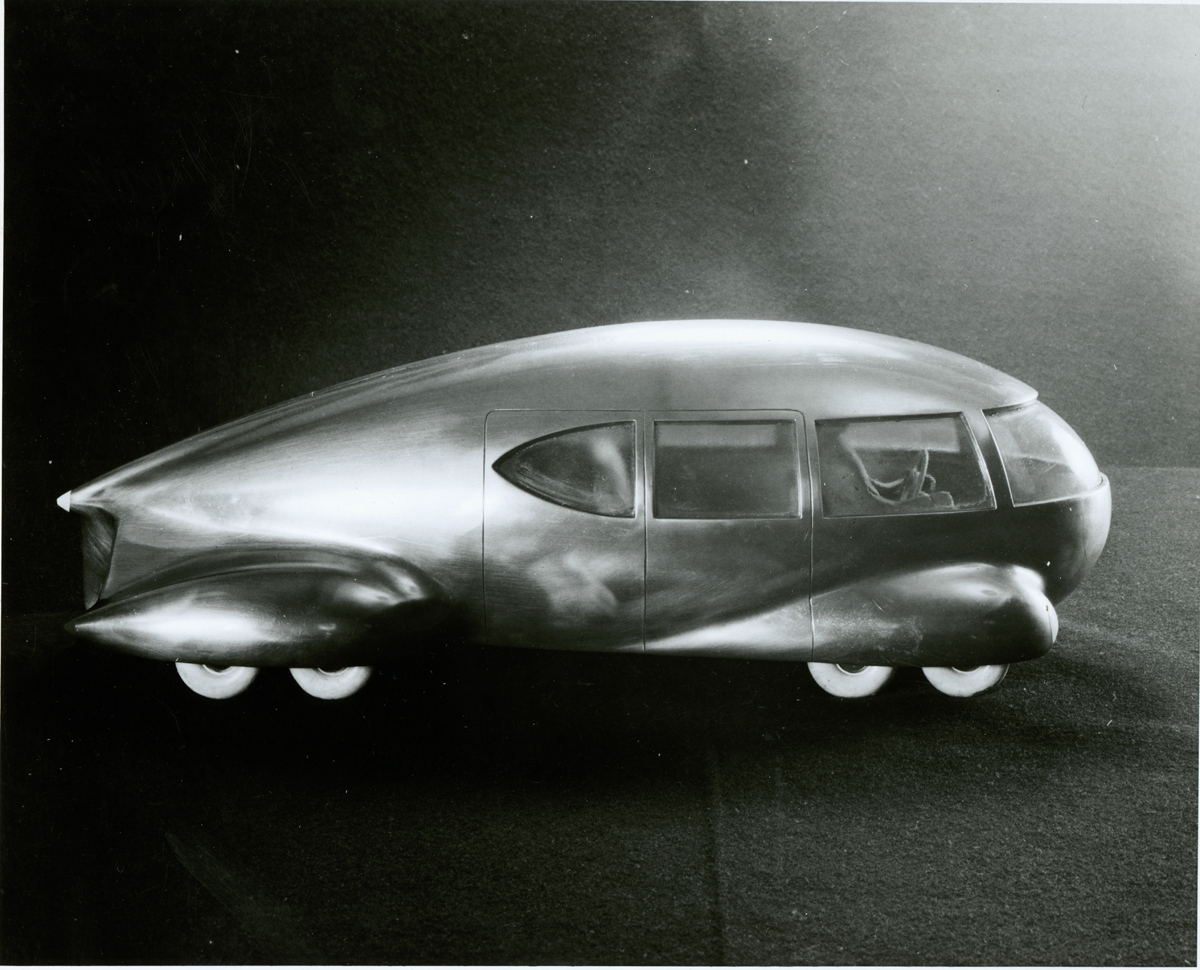“We dream of cars that will float or fly, or run on energy from a laser beam, or travel close to the ground without wheels. Such research may border on the fantastic, but so did the idea of a carriage going about the country without a horse.” –The Ford Book of Styling, 1963
The High Museum of Art in Atlanta is currently hosting the exhibition Dream Cars, which includes items from the Ransom Center’s Norman Bel Geddes collection. The exhibition showcases the innovative and artistic design of rare vehicles from the early 1930s to 2010 and encompasses the evolution of the automobile from a horseless carriage to a sleek, highly functional speed machine. Dream Cars highlights designs and models from across Europe and the United States, including a blueprint, a photograph, and three drawings of Bel Geddes’s 1932 design, Motorcar No. 9.
The exhibition brings together 17 concept cars, including designs from Ferrari, Bugatti, General Motors, and Porsche. These vehicles are paired with conceptual drawings, patents, and scale models to demonstrate how imaginative designs and innovation changed the automobile from a basic, functional object to a symbol of limitless possibilities.
None of the vehicles and designs on display in this exhibition were ever intended for production. Rather, they represent the “dream” of future possibilities and highlight the talent and imagination of industrial designers.
Bel Geddes was an American theatrical and industrial designer who gained fame in the 1920s, ’30s, and ’40s. The Motorcar No. 9 model demonstrates his expertise in aerodynamics and streamlining as a means to modernism. The Ransom Center’s extensive Norman Bel Geddes archive> includes a model of Motorcar No. 9 among other papers, designs, and artifacts that span 50 years.
Related content:
Video: Curator of Norman Bel Geddes exhibition discusses influence of the industrial designer
Please click on the thumbnails below to view larger images.
